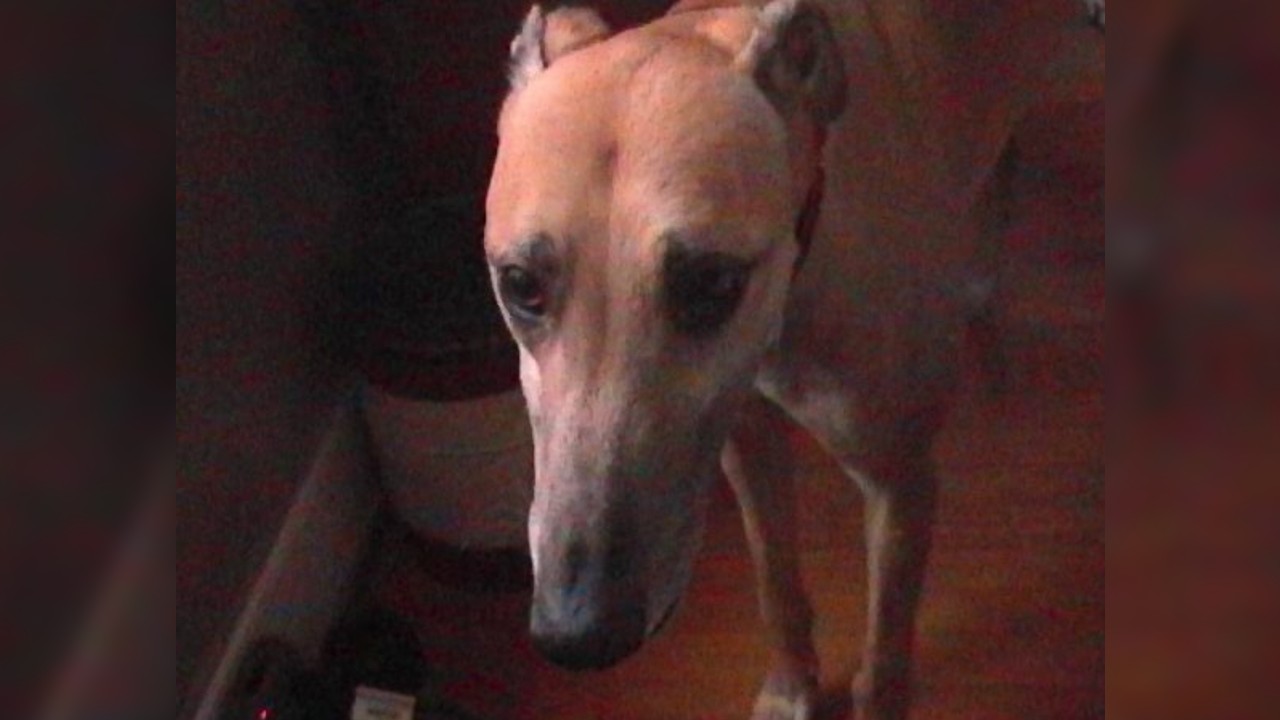I believed that dog adoption was a lifelong commitment and that only bad people give back pets—until my children’s safety was at risk.
They called him a “foster fail.” My husband and I were graduate students when, of all the rescued greyhounds that had passed through our home as fosters, I decided to keep Axel, a huge, tan, sleek beauty who loved me, treats and naps, probably in that order. He commandeered our couches and terrorized our squirrels. He was a wonderful dog, a loyal dog, an easy dog. He also had an air of cattishness about him, a judgy aloofness I adored. When I was twenty-four, we were perfect together. We’ve all had those relationships.
But my husband and I got married, like most grad students who shack up long enough to foster pets together. I decided I didn’t want to be part of the modern university system and ditched my Ph.D. program. Predictably, pregnancy followed. It was a rough one, with severe depression and hyperemesis. But around four years after we’d brought Axel home, we welcomed a baby boy just in time for Christmas.
Axel didn’t seem to mind…much. It was clear he didn’t like sharing me, but he still sat on our couch when I nursed. And while he wasn’t a huge fan of that crawling human, he wasn’t actively hostile.
That is, until his brother was born. That changed everything.

Axel, the author’s adopted greyhound, seemed OK with one kid in the house, but the second one seemed to push him over the edge. Photo: Courtesy of Elizabeth Broadbent
Axel stopped spending time in the room with our family. If we went into a room with our boys, he left. He didn’t want to be around us. I suddenly came with not one but two small people, and he loathed them.
At night, he stopped sleeping with us, and started peeing on the floor in the kids’ rooms. He’d never peed in the house before. I read that urine marking can be a sign of stress and anxiety. A dog has perceived an intruder and is marking its territory against it. It’s meant to assert dominance. Apparently, this happens a lot when a dog has conflicts with other animals within the home. We knew right away that Axel peeing on the kids’ floor every night didn’t bode well, and we did everything we could to fix it. Nothing worked.
We’d never left him alone with the kids, but at this point, we even stopped letting him anywhere near the kids. Or would have, theoretically, if he’d tried to get near them at all. Living with Axel was like living with a large, tan ghost who materialized at mealtimes, wagged his tail apathetically and left. He was nothing like the big, happy dog we’d known.
Axel hated kids. It hadn’t mattered when I was still in graduate school. Me? Kids? No way. But life changes. And when Axel growled at our toddler slowly moving into his field of vision—not touching him or shrieking at him or running at him but simply existing—we knew we had to do something.

Photo: Courtesy of Elizabeth Broadbent
I cried a lot. I hated to lose Axel. Plus, only bad people give back pets. Adopting means a lifetime commitment. You don’t crap out on them because something became difficult. But my children’s safety was at risk. I couldn’t keep a large dog who was clearly depressed and whose aggression was escalating. Aggression against children is one of the most difficult behavioural problems to treat, I discovered, and Axel was only seven years old. Greyhounds can live to be fifteen.
The folks at the rescue understood. They took Axel back into their rescue, noting in his online write-up that he required a family with no children. He found a new home quickly, with an older couple who wanted a lovely couch potato of a dog. I know in my heart that he’s much happier with them than he was with me, and that hurts. We were happy together for a long time. I miss him. When I came across his tag recently, I cried.
I’ve found life has seasons, and that knowledge can break a heart. Any parent who’s ever watched their toddler wobble away from them knows it. I had a wonderful season as a greyhound owner. I’d love to be one again someday. I’d love to have my Axel back. But life has changed. It moved on, and moved on fast, moved in ways I never expected.
I never would have predicted losing Axel. But I don’t feel guilty, just heartbroken.
I know he’s happy now. That’s worth my broken heart.

































